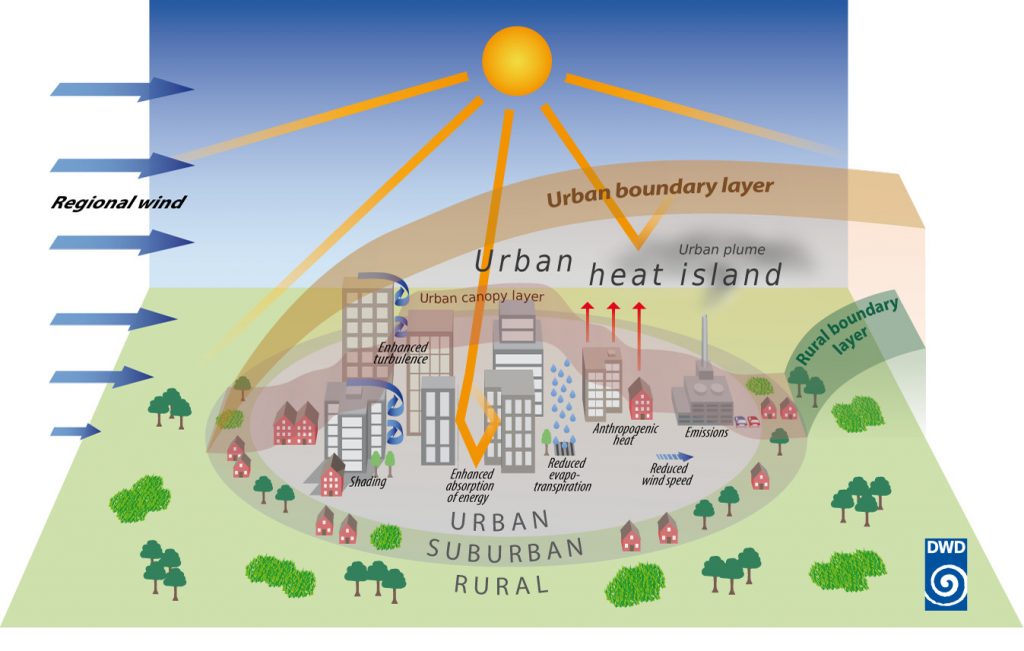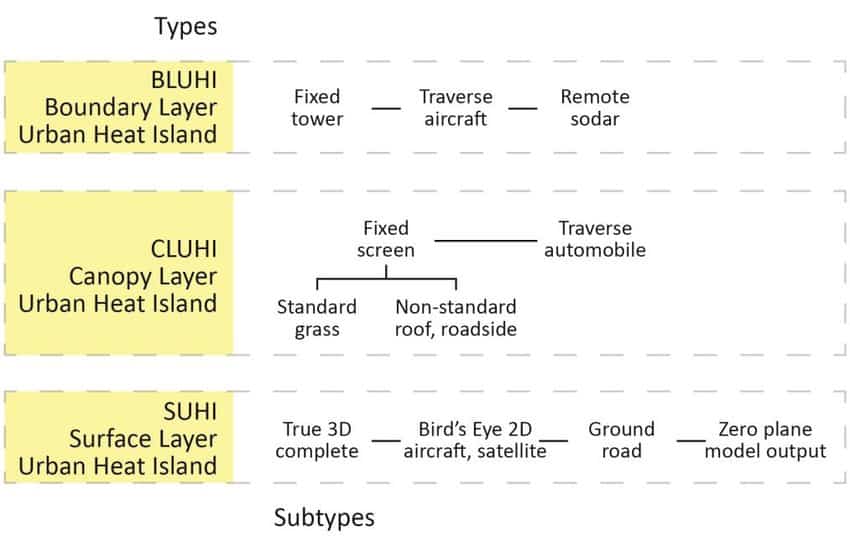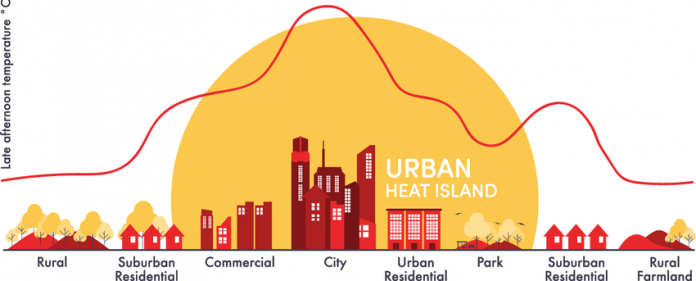Heat islands develop in urban areas because infrastructure replaces open land and vegetation. Rural areas release heat at night thanks to soil and plants. But when paved surfaces and other heat-absorbing elements are present, solar radiation is released more slowly.
Urban Heat Island Characteristics
On hot, sunny days, such as those that occur in late summer, the sun can heat dry, exposed surfaces such as roofs to temperatures that are 50–90 °F (27–50 °C) hotter than surrounding air. In rural areas, the temperature of soil and vegetation remains close to that of the air.

This phenonmenon occurs because of several factors. The principal reason is that tall buildings in cities block cooling of night-time air. Secondly, the nature of surfaces such as concrete, brick, and the like, are thermal, holding in heat, not allowing evaporation. These factors lead to a change in the energy balance of the area, which is further mitigated by the lack of vegetation, which also has a cooling effect.
Tall buildings also produce what is called the urban canyon effect. What happens here is that surfaces, many of which are windows, reflect and actually amplify heat. Solar radiation actually ends up being absorbed by buildings instead of released. Tall buildings also block wind, which prevents cooling by convection. Pollution from vehicles, air conditioning, and industry, also adds to the heating factor. http://www.epa.gov/hiri/
Types of Urban Heat Islands

Not every heat island occurs in urban areas, although most do. Heat island can also occur in rural areas but do not pose cause for concern because they don’t adversely affect the surrounding environment. Urban heat island are divided into three categories—surface urban heat islands, micro urban heat islands, and urban heat sinks.
According to www.urbanheatislands.com, a surface heat island is one where thermal infrared data shows that near surface temperatures and air temperatures are similar. Micro urban heat islands occur in poorly vegetated areas such as parking lots. An urban heat sink occurs when an area is cooler than its surrounding countryside. It is also known as a negative heat island. Few data are available on this phemonmenon.
How Heat Islands Affect the Environment

Elevated temperatures from urban heat islands affect the environment and the quality of life. Negative impacts include the following:
Increased energy consumption, including increased demand for cooling during hot summer weather add pressure to electrical output during peak demand periods, thus increasing the carbon footprint.
Additional air pollutants and greenhouse gas emissions are produced when energy demands are increased. Higher air temperatures also promote the formation of ground-level ozone.
Lower quality of life occurs with warmer days and nights, and higher pollution level. Individuals such as the elderly and those with respiratory problems like asthma must be careful in extreme heat waves. Heat-related mortality increases significantly as witnessed by the Midwestern heatwave of 1995 when over 100 people died in Chicago due to heat-related causes.
Impaired water quality is the result of hot pavement and rooftop surface runoff that drains into storm sewers and ultimately raises water temperatures. Such water is commonly released into streams, river, ponds, lakes, etc, producing temperature change that stress local ecosystems.


















